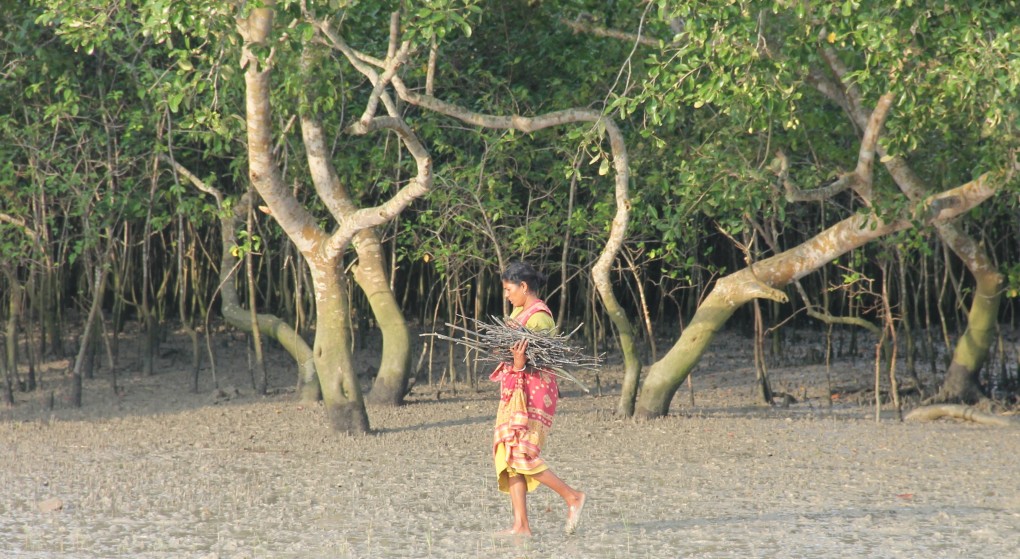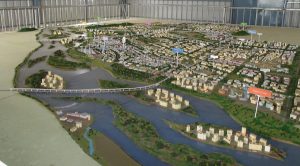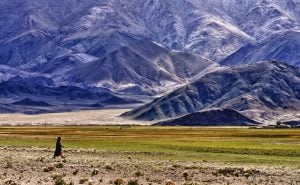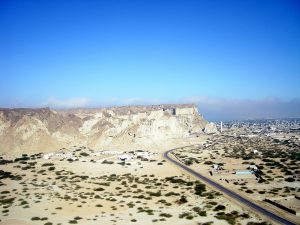Until a few decades ago they were called swamps, and thought to be dens of mosquitoes, good only as rubbish dumps or to be drained and built upon. Even earlier, they were regarded as a site for ghosts and will o’ the wisps, which could drag the unwary to their death.
Since then, wetlands have gained some prestige, though mainly only among environmentalists, academics and some policymakers who realise the multiple roles that the wetlands play by recharging aquifers, tempering floods, alleviating droughts, acting as a buffer against violent storms, as well as providing a habitat to birds, fish and animals.
The signing of the Ramsar Convention, on 2 February 1971, marked a change in global policymaking. The convention was designed to preserve wetlands of international importance, and its signing date is celebrated annually as World Wetlands Day. This year the theme is Wetlands for our Future: Sustainable Livelihoods.
Globally, over 2,200 wetlands have been listed under the convention, but many of them remain under serious threat. Freshwater wetland ecosystems are among the most exploited. It is estimated that Asia loses 5,000 sq. km. of wetland areas every year to agriculture and building projects.
World Wetlands Day is an opportunity to take stock of how the important wetlands in South Asia are doing.
Bangladesh
Bangladesh — which shares the world’s largest mangrove forest, the Sundarbans, with India — is planning a joint project to preserve this unique tidal wetland. There are serious problems. The last tiger census showed only around 100 tigers in the Bangladesh part of the Sundarbans. The country’s main inland waterway goes right through the forest to Mangla port. There have been oil spills and chemical spills there within the last 14 month, so now there is a debate on whether the country can afford to develop another inland waterway further east. There have been controversies over a plan to site a thermal power plant in Rampal, on the edge of the Sundarbans.
See: Only 100 Bengal tigers left in Bangladesh Sundarbans
See: Capsized ships endanger Sundarbans ecology
See: India and Bangladesh agree joint initiative for Sundarbans
See: Bangladesh struggles to fund controversial Sundarbans coal project
Apart from the Sundarbans, Bangladesh has two other Ramsar sites — Hakaluki Haor and Tanguar Haor — both in the north-eastern part of the country. Hakaluki Haor has over 550 species of birds and animals, many of them under the threat of extinction. With nearly 200,000 people surrounding the wetland area, human pressure is unrelenting.
That pressure is worse in Tanguar Haor, often called the nursery of most freshwater fish in Bangladesh. With 46 villages and an estimated population of 40,000 living within the protected wetland, overfishing remains a critical issue.
India
India has over 750,000 wetlands that account for nearly 4.7% of the country’s geographical area but support a full 20% of the country’s biodiversity. Twenty six of these have been designated Ramsar sites. Apart from birds, fish and reptiles, they are home to many species of otters and dolphins.
India’s wetlands range from the high altitude lake in Himachal Pradesh from which the Chandra river originates to become the Chenab, to the Cauvery delta in Tamil Nadu, the world’s most productive rice farming land.
With unplanned urbanisation and changing land use, encroachments and pollution are the biggest threats faced by wetlands in India. The result is a rapid deterioration in water quality and reduction in quantity.
The most dramatic recent effects of wetlands destruction have been the floods in Srinagar and Chennai — two cities where the rainwater has nowhere to go. The most chronic urban flooding that takes place for the same reason are in Mumbai and Kolkata — in Mumbai due to encroachments on the Mithi river; and in Kolkata due to the construction of the satellite township Salt Lake on what used to be the city’s eastern wetlands, connecting to the Sundarbans.
See: Heaviest rain in 100 years drown Chennai — again
See: The disappearing water bodies of Kashmir
See: Constant rain brings misery to Kashmir
See: Choked riverbeds worsen floods in Kashmir
India’s water rights activists have been demanding that control over wetlands be transferred from state governments to local governments at the city or village levels. They say this is the only way to make the authorities accountable and stop encroachments.
See: India’s waterman demands water security law
Explaining why these crucial wetlands are being treated as wastelands, Suresh Babu, Director – Water Policy and River Basins, WWF, said that the economic value of the wetlands has not been recognised so far, and “Destruction of catchments areas and over-extraction of water from rivers that provide water to these wetlands are adding to the stress.”
Giving an example, Babu said, “Bharatpur [in Rajasthan, a wetland that is among the world’s most famous bird sanctuaries] used to get water from Gambhir, a seasonal rain-fed river, but due to water extraction for agriculture, the park often faces water shortage like it did last year. When we plan cities and towns, the concept of minimum ecological flow of water to these wetlands has to be incorporated.”
The Indian government formulated The Wetlands (Conservation and Management) Rules in 2010 but that has not stopped the ongoing degradation. Emphasising citizen involvement, Babu said, “In rural areas, the wetlands are directly linked with livelihoods of people and so local people still come together to conserve and manage them, but in urban areas, where it is not the case, people often don’t see them as the source of water and life, and conserving them becomes a big challenge.”
Nepal
Nepal has one of the newest Ramsar sites in the world — Pokhara, the city of lakes in the western part of the country. It is being officially declared a Ramsar site this World Wetlands Day.
But the famous cluster of nine lakes in the Pokhara valley — Phewa, Begnas, Rupa, Dipang, Maidi, Khaste, Gunde, Niureni and Kamalpokhari — is under threat due to rapid urbanisation, encroachment and increasing siltation.
The lakes are being silted up due to the construction on the hills surrounding them, which has loosened the soil — and all this in Nepal’s most popular tourist destination.
According to Nepal’s National Biodiversity Strategy and Action Plan (2014-20), 0.8 million hectares (about 5.5%) of the total area of the country is covered by wetlands. The ministry of Forests and Soil Conservation had prepared a National Wetlands Policy in 2003 and updated it in 2013.
The problem lies in the implementation of the policy. Officials say preservation of wetlands is an issue that cuts across ministries, and the major problem is lack of coordination among them.
According to the Department of National Parks and Wildlife Conservation, about 50% of Nepal’s wetlands are in the southern plains where half of the population resides. As migration from hilly areas to the plains remains rapid, these wetlands will come under increasing stress.
“Encroachment is a serious problem now and wetlands have been the victims of encroachment. In addition, though very rich in biodiversity, these places are perceived as wasteland so conservation of these water bodies has not been a priority,” admitted a senior official.
According to the National Lake Conservation Development Committee established in 2007 under the ministry of Tourism there are over 5,000 lakes in Nepal. Many are in urgent need of conservation. More than a decade after formulating its wetlands policy, Nepal is still struggling to prepare a nationwide atlas of wetlands, leave alone conserve them.
Pakistan
Pakistan now has a draft National Water Policy. Unfortunately it says remarkably little about preservation of its wetlands, be it in the Hindu Kush Himalayas or in the Indus delta.
See: Pakistan readies National Water Policy
And this is happening when flash floods are becoming more common in the mountains, while the country’s largest city, Karachi, is being repeatedly flooded due to choked waterways.
See: Learning to live with flash floods
See: Waterways choked, Karachi on brink of floods with each rain

Pakistan has 19 Ramsar sites spread across all four provinces, including the entire Indus delta and a special dolphin reserve on the Indus. But even Asia’s largest freshwater lake has not been immune to an ill-conceived drainage scheme.
See: The destruction of Pakistan’s Manchar lake
As in India, there are some very valuable wetlands in the desert region of Pakistan, and environmentalists in both countries have been striving to protect one wetland that straddles the border between the two countries. A Ramsar site in this region is the Deh Akro II Desert Wetland Complex.
This is one of the most important wetlands is the Indus river delta, which is as wide as 210 km where the Indus meets the Arabian Sea. The state of the delta has been of grave concern for many years, as upriver dams held back freshwater and the Indus actually stopped flowing to the sea.
In a way, nature addressed that problem through the 2010 floods that devastated Pakistan. The Indus is now flowing to the sea again, there is a major drive to plant mangroves in the delta, and there is some hope that this global heritage — home of the Indus dolphin and the world’s largest arid mangrove forest — will be preserved, unless more dams are built upriver.
The other threat to the Indus delta is the rising level of the Arabian Sea due to climate change. Of the million-plus people who live in the delta — dependent on farming and fishing — many have been forced to abandon their homes as salt water crept into their farms and wells.
Other coastal wetlands are also under threat. The construction of the Gwadar port endangers the Jiwani coastal wetland of Balochistan, another Ramsar site. Environmentalists have been insisting that the wetland should neither be drained nor filled up as the port is built, and the struggle with the project developers is on.
In the mountains of northern Pakistan, there are two Ramsar wetlands vital for migratory birds — Tanda dam and Thanedar Wala, both in Khyber-Pakhtunkhwa province. Officials say these wetlands are in good health, but it is difficult to find money for them, because tourism has been badly affected by terrorism.
Wetlands, swamps, marshes, call them what you will, it is clear that we need them, that we are not taking care of them as we should, and the situation needs to change quickly.
~~
Additional reporting from Rafiul Haq, Member – IUCN CEM (Commission on Ecosystem Management)








